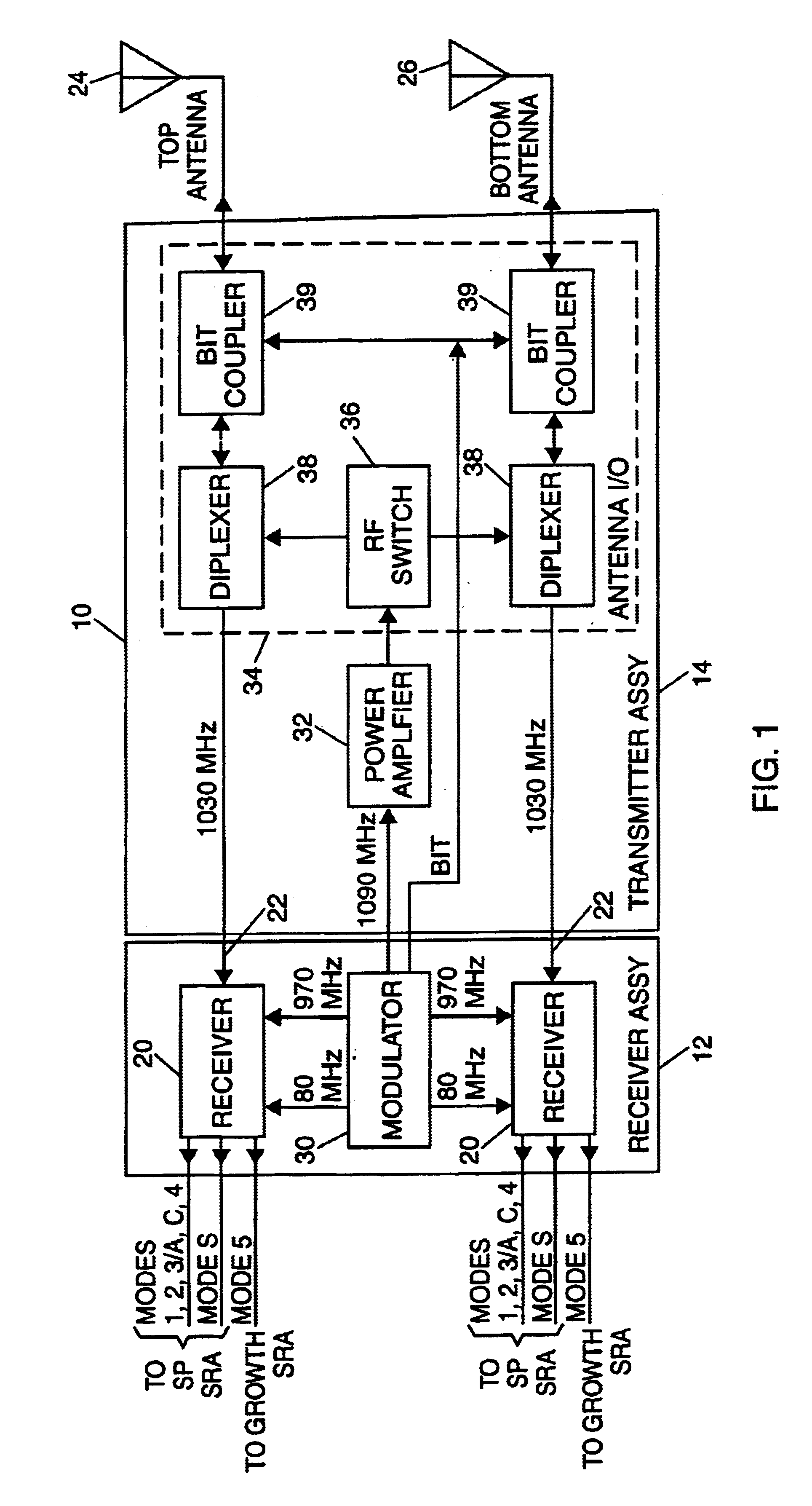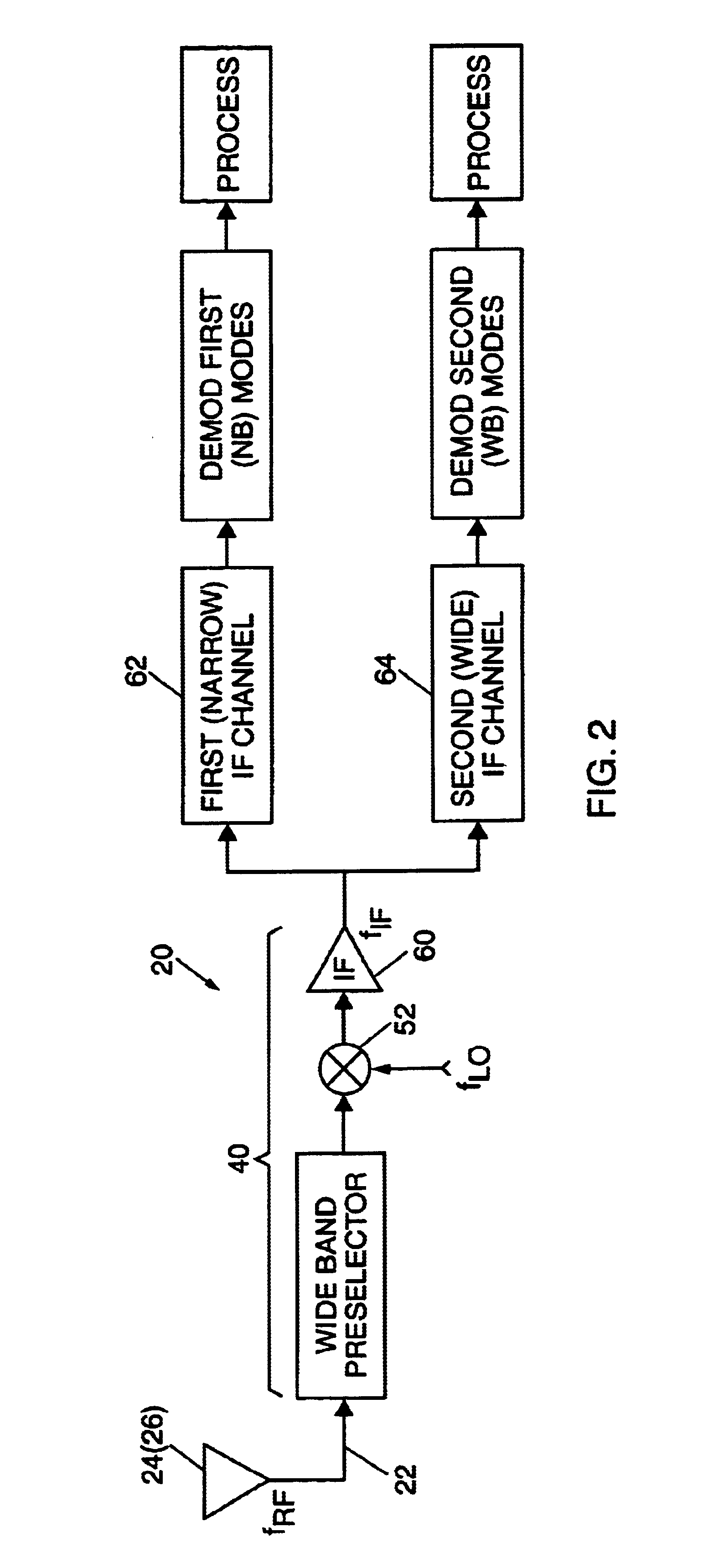Multi-mode IFF receiver architecture
a receiver architecture and multi-mode technology, applied in the field of multi-mode radio frequency (rf) receiver architecture, can solve the problems of incompatibility with mode 5, spectrum applications which require a much larger receiver bandwidth, phase distortion, pulse fidelity,
- Summary
- Abstract
- Description
- Claims
- Application Information
AI Technical Summary
Benefits of technology
Problems solved by technology
Method used
Image
Examples
Embodiment Construction
[0021]FIG. 1 is a functional block diagram of a transponder 10 including a receiver assembly 12 and a transmitter assembly 14. The receiver assembly 12 includes two substantially identical receivers 20, each with an input terminal 22 adapted for coupling to a separate receiving antenna 24 or 26 for diversity performance. For example, a top antenna 24 associated with one of the receivers, and a bottom antenna 28 associated with the other receiver, may be deployed at corresponding top and bottom positions on an aircraft body. Each receiver 20 is configured to respond, for example, to desired Mark XII SIF Modes 1, 2, 3 / A, C and Mode 4, as well as to desired Mode S and Mode 5 interrogating signal waveforms. An overall block diagram of one of the receivers 20 is given in FIG. 2.
[0022]The receiver assembly 12 also has a modulator 30, which provides frequency generation for each of the receivers, and waveform modulation for the transmitter assembly 14. The transmitter assembly 14 includes ...
PUM
 Login to View More
Login to View More Abstract
Description
Claims
Application Information
 Login to View More
Login to View More - R&D
- Intellectual Property
- Life Sciences
- Materials
- Tech Scout
- Unparalleled Data Quality
- Higher Quality Content
- 60% Fewer Hallucinations
Browse by: Latest US Patents, China's latest patents, Technical Efficacy Thesaurus, Application Domain, Technology Topic, Popular Technical Reports.
© 2025 PatSnap. All rights reserved.Legal|Privacy policy|Modern Slavery Act Transparency Statement|Sitemap|About US| Contact US: help@patsnap.com



